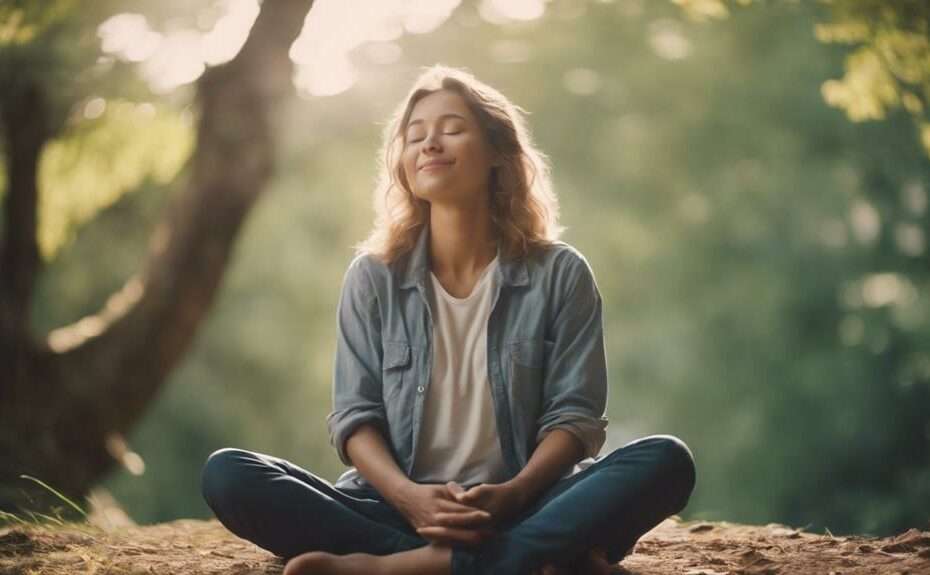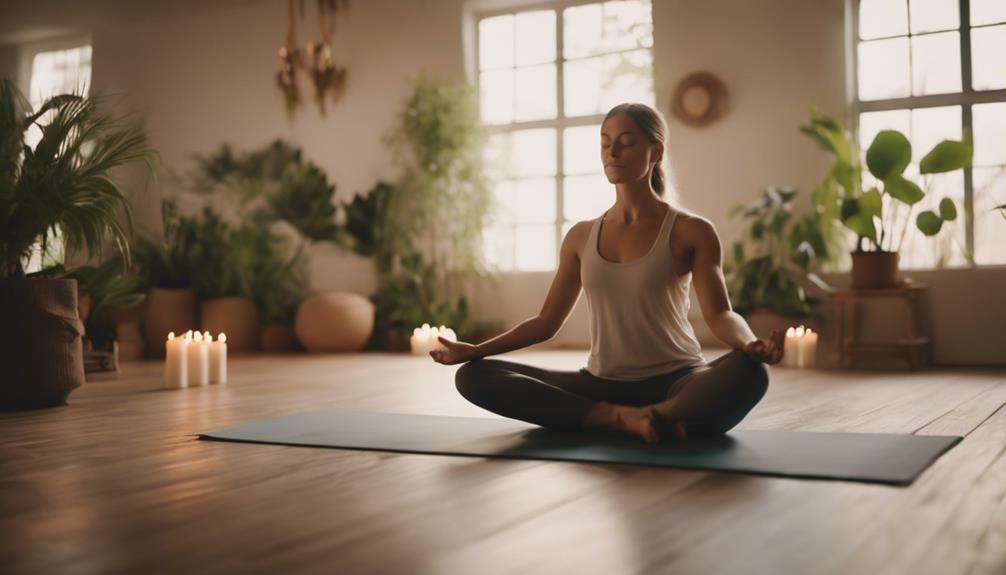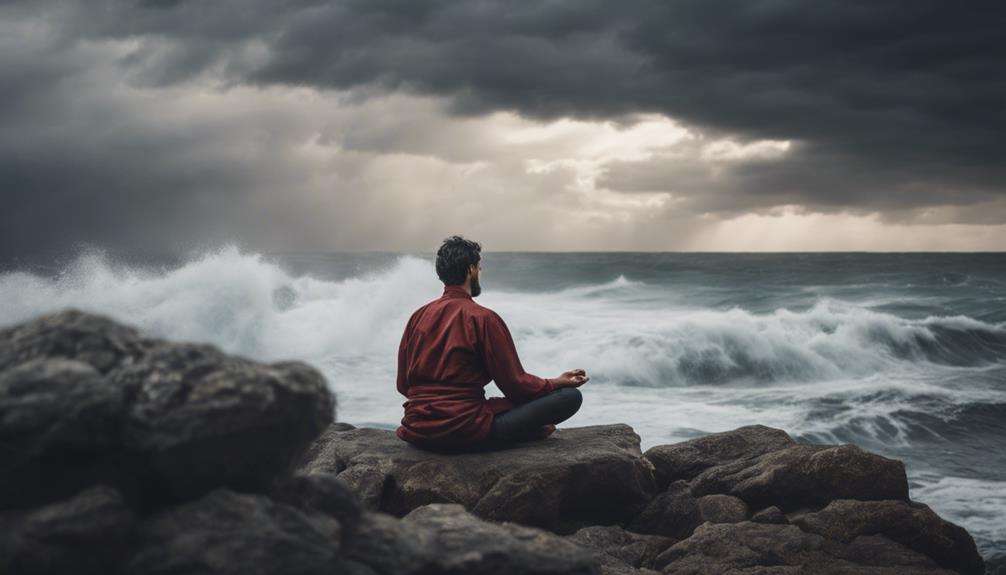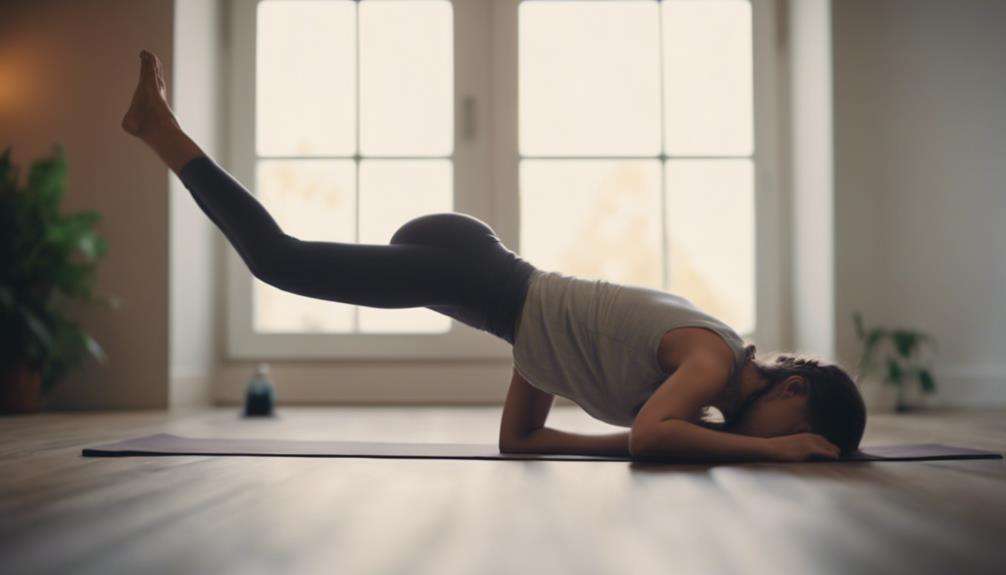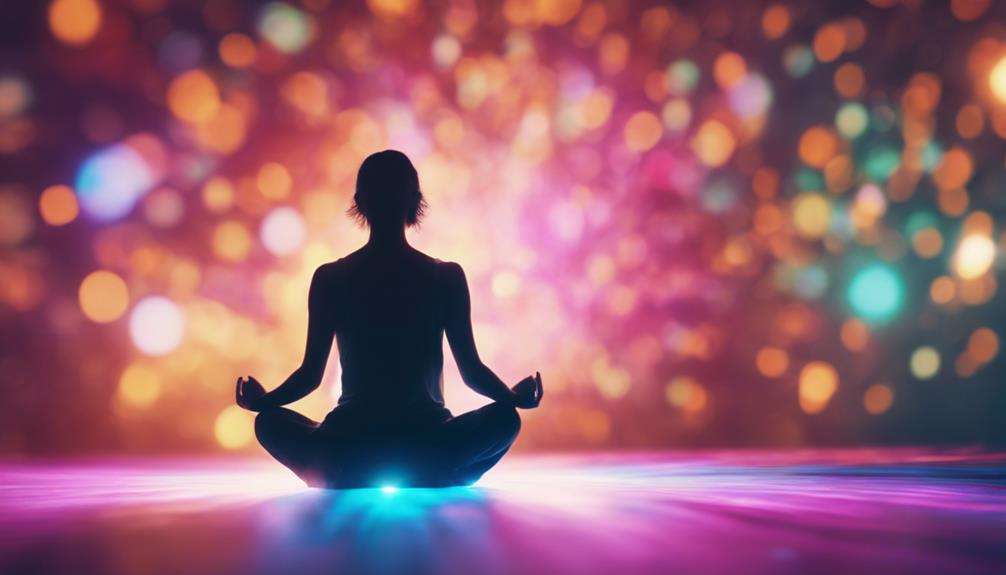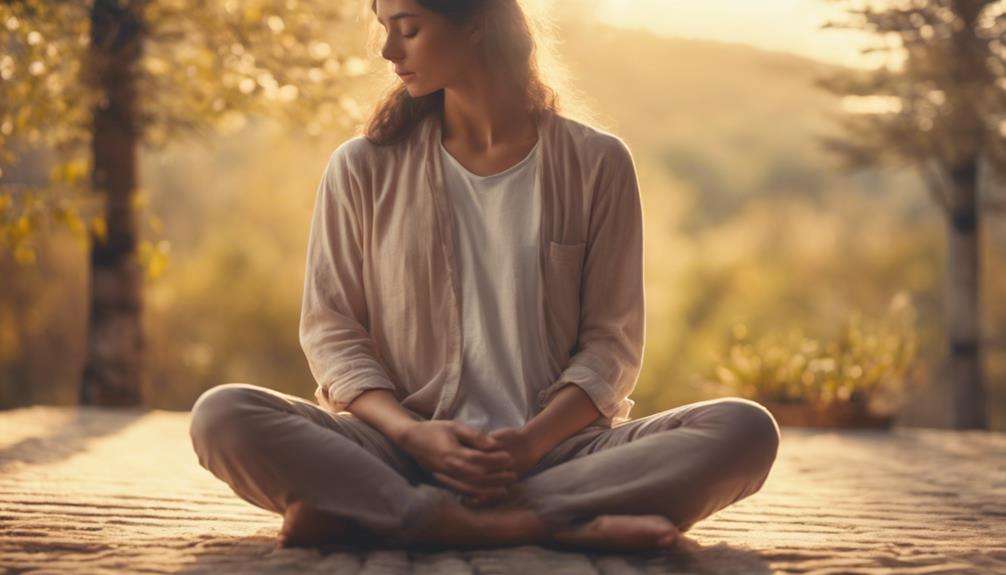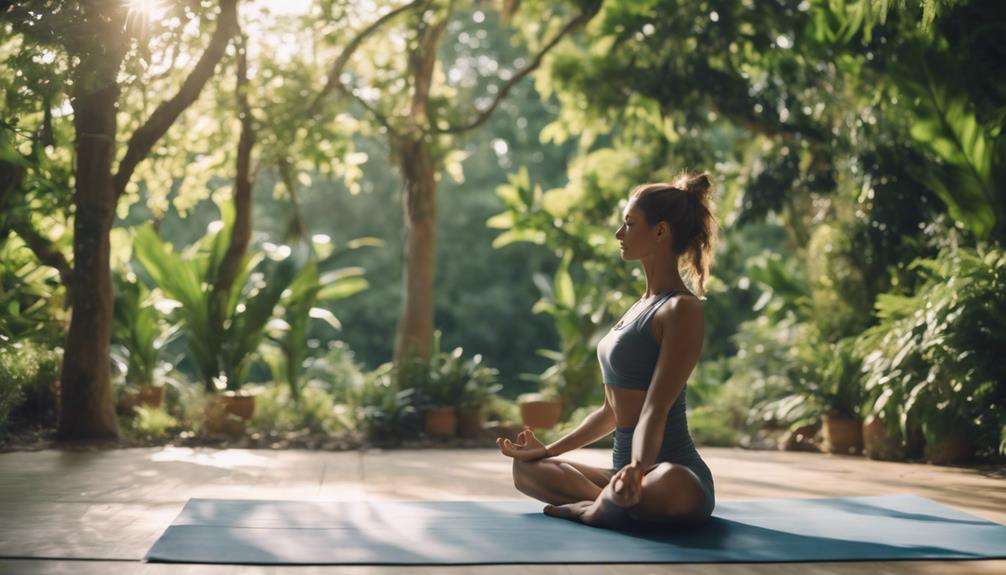If you find yourself overwhelmed by stress after a long day at work, imagine the relief of unwinding with a simple yoga pose. Picture yourself in a serene setting, feeling tension melt away as you gently move through each posture.
As you explore the transformative power of these top yoga poses, you'll discover a pathway to inner peace and rejuvenation.
Key Takeaways
- Yoga poses like Stick Pose and Corpse Pose relieve stress and promote relaxation.
- Benefits include reduced anxiety, enhanced mindfulness, improved circulation, and emotional balance.
- Detoxifying poses like Revolved Abdomen Pose aid in cleansing the body and enhancing flexibility.
- Proper alignment and incorporation tips ensure safe practice and optimize the detoxification process.
Stick Pose (Yastikasana)
If you're seeking a yoga pose that can relieve stress and tension in your body, consider practicing Stick Pose (Yastikasana). This seated forward bend is excellent for promoting relaxation, flexibility, and posture. By stretching the spine, hamstrings, and shoulders, Stick Pose helps in reducing anxiety and fatigue while enhancing mental clarity. Regular practice of this pose can release tightness in the back and shoulders, ultimately lowering stress levels.
Stick Pose is a powerful tool for tension relief, offering a moment of calm in the midst of a hectic day. As you fold forward in this posture, you allow your body to unwind and your mind to focus on the present moment. The deep stretch provided by Stick Pose not only eases physical tension but also helps in cultivating a sense of peace and tranquility within. Incorporating this yoga pose into your routine can make a significant difference in how you manage stress and maintain a sense of well-being.
Corpse Pose (Savasana)
Considered the ultimate relaxation posture in yoga, Corpse Pose (Savasana) entails lying flat on your back with arms and legs extended, promoting deep relaxation and stress reduction. This pose is a powerful tool for enhancing your well-being and finding inner peace amidst the chaos of daily life.
- Reduces Stress: By allowing your body and mind to fully relax, Savasana helps in reducing stress levels significantly.
- Promotes Deep Relaxation: This pose encourages a state of deep relaxation, helping to calm your nervous system and release tension.
- Enhances Mindfulness: Practicing Corpse Pose regularly can enhance your mindfulness, bringing your attention to the present moment.
- Aids in Calming the Mind: Savasana aids in calming the mind, providing a sense of tranquility and peace.
- Improves Inner Peace: By surrendering to the stillness of Corpse Pose, you can experience a profound sense of inner peace and emotional balance.
Incorporate this pose into your yoga routine to experience the profound benefits it offers for your overall well-being and mental clarity.
Reclining Bound Angle With Bolster (Supta Baddha Konasana)
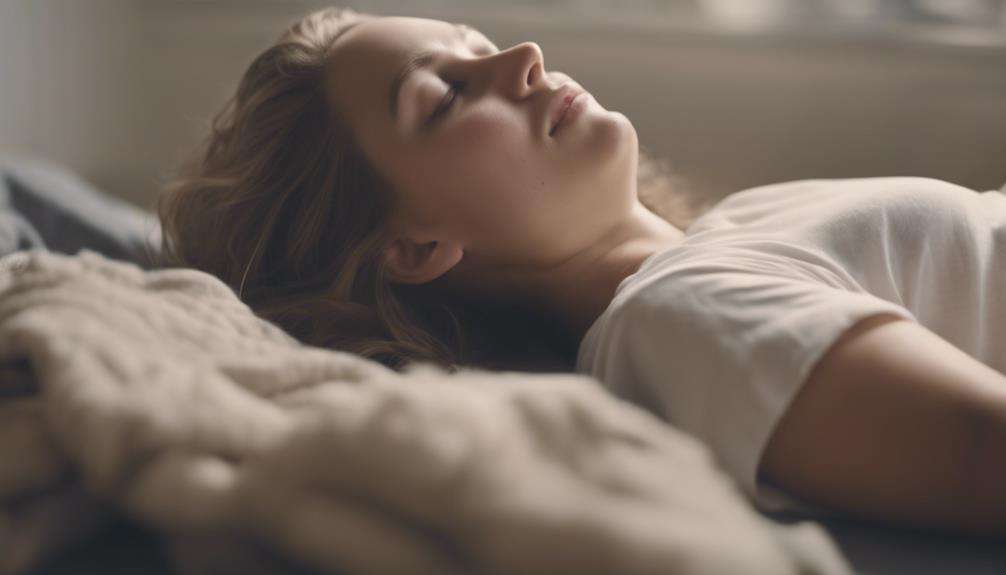
When practicing Reclining Bound Angle With Bolster (Supta Baddha Konasana), you'll experience a soothing release of stress and tension in your body.
This restorative pose involves lying on your back with the soles of your feet together, supported by a bolster for added comfort.
It opens up your hips, groin, and chest, promoting relaxation and deep breathing.
Benefits of the Pose
Reclining Bound Angle With Bolster (Supta Baddha Konasana) eases tension in the hips and groin while promoting relaxation through chest and heart opening. This pose not only targets specific areas of the body but also offers a range of benefits that contribute to your overall well-being:
- Releases tension in the hips and groin
- Promotes relaxation through chest opening
- Enhances circulation and reduces fatigue
- Provides gentle support with a bolster
- Effectively relieves stress and calms the mind
Incorporating Supta Baddha Konasana into your routine can help you experience physical comfort, mental tranquility, and emotional balance. Embrace the supportive nature of this pose to nurture your body and mind, allowing stress to melt away.
Proper Alignment Tips
To ensure proper alignment in Reclining Bound Angle With Bolster (Supta Baddha Konasana), position the bolster under your back for essential support and comfort.
Keep the soles of your feet together, allowing your knees to gently fall out to the sides, which helps open up the hips and groin area, promoting relaxation and releasing tension.
Make sure your spine is comfortably supported by the bolster to maintain a natural alignment.
As you settle into the pose, remember to breathe deeply to enhance the stress-relief benefits.
Focus on relaxing your body and mind, letting go of any tension.
This pose offers a soothing and restorative experience when done with proper alignment and mindful breathing.
Modifications for Beginners
For beginners seeking a gentle introduction to Reclining Bound Angle Pose with a bolster, consider incorporating modifications to enhance comfort and support during practice. Using a bolster in Supta Baddha Konasana supports the lower back and encourages a comfortable stretch in the inner thighs. This modification helps beginners ease into the full pose by offering added support and reducing strain. Reclining Bound Angle Pose with a bolster allows for a longer, more restorative hold to release tension and promote relaxation. The use of a bolster in Supta Baddha Konasana enhances the restorative benefits of the pose, making it accessible and soothing for beginners.
- Supportive Bolster: Place a bolster under your back for added support.
- Gentle Hip Opening: Allow your hips to gradually open with the support of the bolster.
- Inner Thigh Stretch: Feel a comfortable stretch in your inner thighs.
- Relaxation and Tension Release: Embrace the restorative nature of the pose for relaxation and tension release.
- Beginner-Friendly: Perfect for those new to yoga seeking a gentle yet effective practice.
Legs Up the Wall Pose (Viparita Karani)
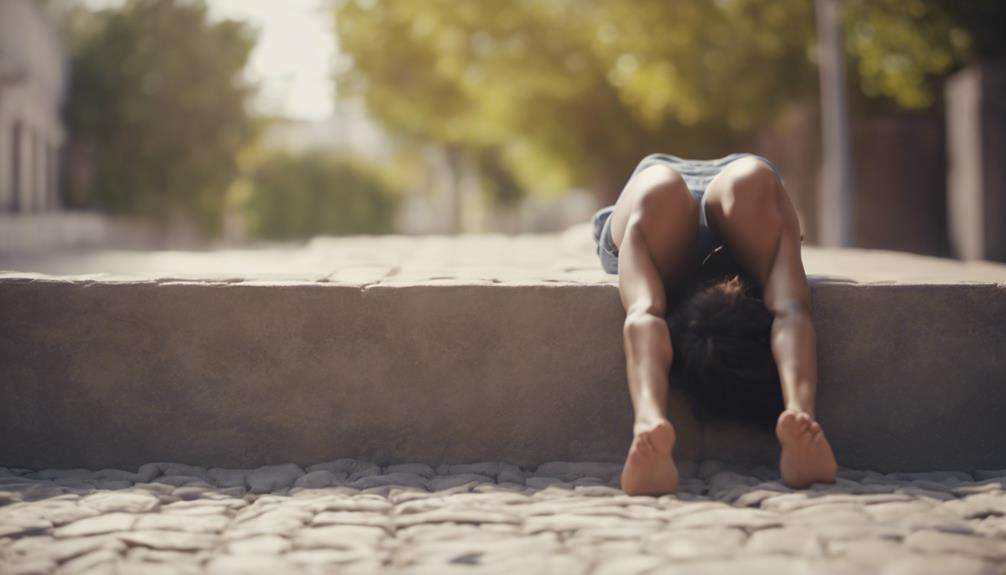
Rest your legs up against a wall to experience the calming benefits of the Legs Up the Wall Pose (Viparita Karani). This restorative pose is a powerful tool to reduce stress and calm the mind. By lying on your back and extending your legs vertically up the wall, you can improve blood circulation, reduce swelling in the legs, and promote lymphatic drainage.
Spending just 5-10 minutes in this position can help relieve tension in the lower body, while also soothing your nervous system. Legs Up the Wall Pose is particularly effective as a bedtime practice, preparing your body and mind for a restful night's sleep. Incorporating this pose into your routine can have a profound impact on your overall well-being, providing a moment of relaxation and rejuvenation in the midst of a busy day.
Try Viparita Karani today to experience its wonderful benefits firsthand.
Rag Doll Pose (Uttanasana Variation)
Experience a sense of relaxation and release in Rag Doll Pose (Uttanasana Variation) as you gently fold forward, allowing your spine to unwind and tension to melt away. This soothing forward fold not only relaxes the spine but also releases tension in the shoulders and neck, promoting a deep sense of calm. By swaying gently from side to side while holding opposite elbows, you can deepen the stretch and enhance the benefits of this pose.
Here are some key points to consider when practicing Rag Doll Pose:
- Relaxes the spine and releases tension in the shoulders and neck.
- Helps calm the mind, relieve stress, and improve circulation.
- Alleviates headaches and fatigue by allowing the head to hang heavy.
- Enhances flexibility in the hamstrings, lower back, and shoulders.
- Aids in overall stress relief and relaxation.
Incorporating Rag Doll Pose into your routine can contribute significantly to your well-being by fostering a sense of ease and rejuvenation.
One-Legged Seated Forward Bend (Janu Shirasasana)
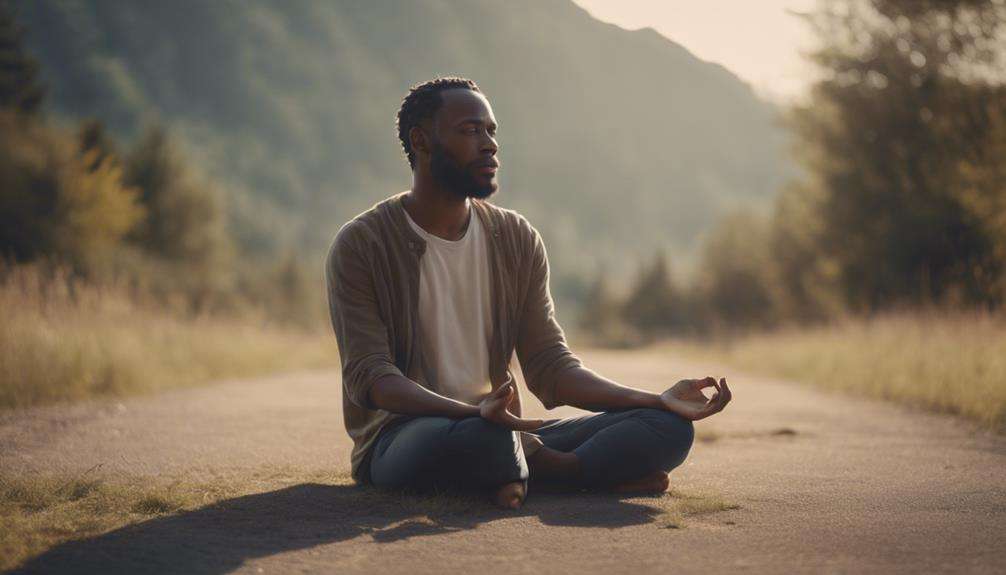
Incorporating One-Legged Seated Forward Bend (Janu Shirasasana) into your routine can enhance flexibility in the hips and lower back while also promoting a sense of calm and mental well-being. This pose gently stretches the hamstrings, groins, and spine, helping to release tension and improve overall flexibility. Janu Shirasasana is particularly beneficial for relieving mild depression, anxiety, and fatigue, offering a moment of tranquility in your day.
Moreover, by stimulating digestion and the liver and kidneys, this pose supports your body's natural detoxification processes.
If you find tight hamstrings or lower back issues challenging, don't worry; Janu Shirasasana can be modified to suit your needs. With regular practice, you can gradually ease into the full expression of the pose, experiencing its full range of benefits.
Whether you're looking to increase flexibility, calm your mind, or improve digestion, adding Janu Shirasasana to your yoga practice can be a valuable tool for enhancing your overall well-being.
Revolved Abdomen Pose (Jathara Parivartanasana)
Revolved Abdomen Pose (Jathara Parivartanasana) offers numerous benefits for your digestive system and overall well-being.
By gently twisting your body, this pose helps massage your internal organs, aiding in detoxification and improving digestion.
Paying attention to proper alignment in this pose can maximize its effects and promote a sense of relaxation.
Benefits of the Pose
Improving digestion through gentle massage of the internal organs, the Revolved Abdomen Pose (Jathara Parivartanasana) offers a range of detoxification benefits that enhance digestive system functionality. This powerful yoga pose aids in detoxifying the body by stimulating the kidneys and liver, promoting overall detoxification. Additionally, it helps relieve lower back pain and enhances spinal flexibility. Regular practice of this pose can assist in reducing bloating and improving circulation in the abdominal area.
- Stimulates the kidneys and liver for detoxification benefits.
- Relieves lower back pain and enhances spinal flexibility.
- Reduces bloating by aiding digestion.
- Improves circulation in the abdominal area.
- Enhances overall detoxification process.
Proper Alignment Tips
To ensure proper alignment in the Revolved Abdomen Pose (Jathara Parivartanasana), focus on maintaining a gentle twist, engaging your core muscles, and supporting the health of your spine. By aligning your body correctly, you protect your back, promote spinal flexibility, and enhance the health of your abdominal organs.
The twisting motion aids in detoxification, massages your internal organs, and improves blood flow to the abdominal area. Engage your core muscles to stabilize your body and allow for a deeper stretch. Proper alignment not only prevents strain on your lower back but also encourages relaxation and tension release.
Incorporating Yoga Into Daily Routine
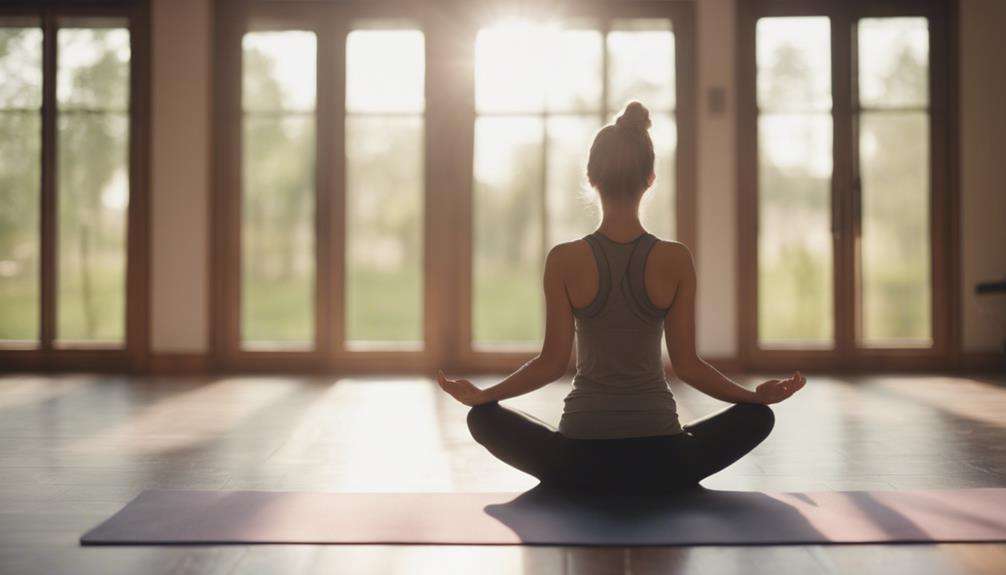
Considering the busy nature of modern lifestyles, finding ways to seamlessly incorporate yoga into your daily routine can greatly benefit your overall well-being. Here are some practical tips to help you integrate yoga effortlessly into your day:
- Short Sessions: Even a brief 10-minute yoga session in the morning can set a positive tone for the day.
- Lunchtime Stretch: Use your lunch break to indulge in some gentle yoga stretches to relax your body and mind.
- Evening Wind Down: Wind down before bed with a calming yoga routine to release tension from the day.
- Desk Yoga: Incorporate simple desk-friendly yoga poses throughout your workday to combat stiffness and improve focus.
- Weekend Workshops: Attend longer yoga classes or workshops on weekends to deepen your practice and recharge for the upcoming week.
Frequently Asked Questions
What Is the Best Yoga to Reduce Stress?
To reduce stress effectively, focus on deep breathing, mindful movement, grounding poses, gentle stretches, and calming sequences in yoga. Incorporate peaceful postures and tranquil poses for stress release. Practice regularly for serene stretches and overall well-being.
What Is the Most Relaxing Yoga Pose?
For the ultimate relaxation, embrace Corpse Pose. Letting go of tension, finding stillness in mindful breaths, and sinking into gentle stretches, this pose leads you on a journey of tranquil flow and peaceful meditation.
Which Yoga Pose Is Best for Anxiety?
To ease anxiety, practice deep breathing, gentle stretching, grounding poses, and mindful movement. Incorporate calming sequences, relaxation techniques, controlled breathing, and stress relief practices. Find peace through a peaceful practice that releases tension.
What Yoga Poses Reduce Cortisol Levels?
You can reduce cortisol levels with stress-busting asanas like Child's Pose and Corpse Pose. Incorporate poses like Legs Up the Wall and Bridge Pose for relaxation techniques. Yoga, with poses like Reclined Twist and Standing Forward Fold, promotes hormone regulation and mental clarity.
Conclusion
Incorporate these top yoga poses for stress relief into your daily routine to experience the calming benefits.
Can you envision a life free from stress and anxiety by practicing these poses regularly?
Take a few minutes each day to care for your mental and physical well-being through the power of yoga.
Start today and feel the positive impact on your overall health and happiness.
